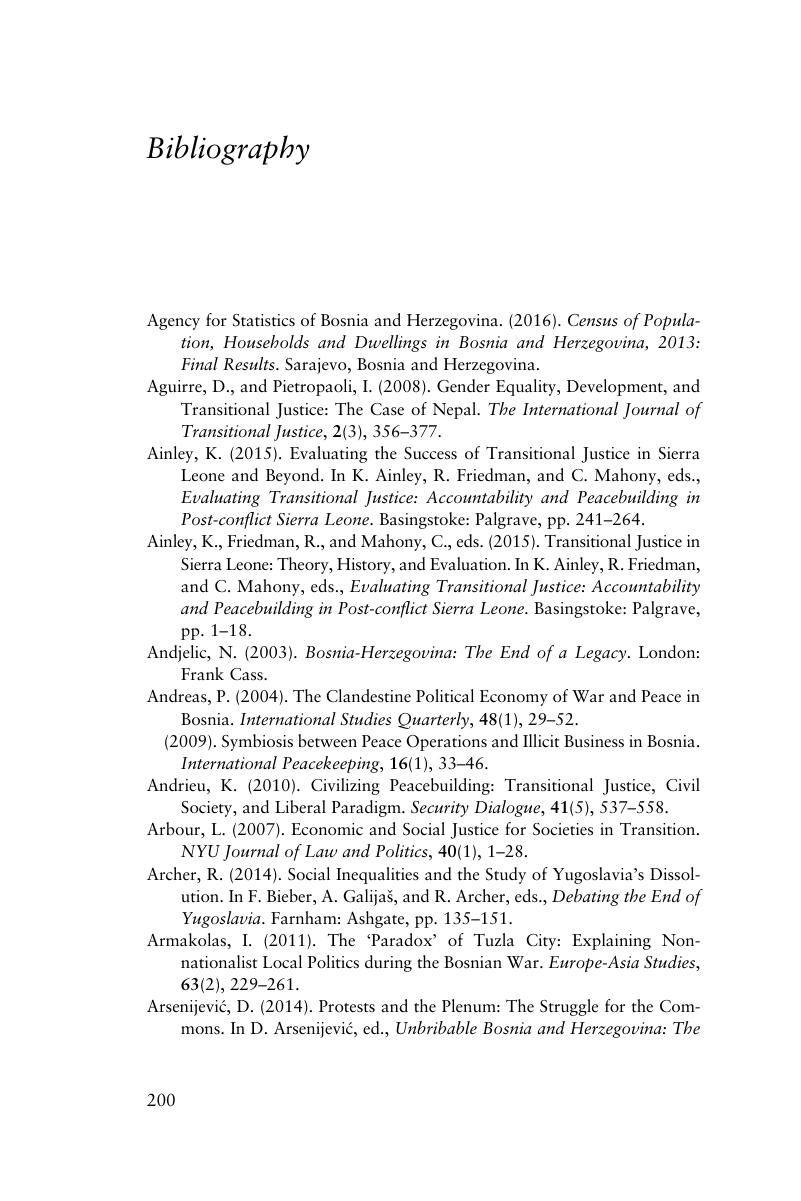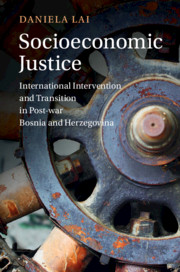Book contents
- Socioeconomic Justice
- LSE International Studies
- Socioeconomic Justice
- Copyright page
- Epigraph
- Contents
- Tables
- Acknowledgements
- Abbreviations
- 1 Introduction: ‘We Only Fight for Social Justice’
- 2 Theorising Socioeconomic Justice for Post-war Societies
- 3 Bosnia and Herzegovina between Its Post-war and Post-socialist Condition
- 4 The International Political Economy of Socioeconomic Injustice
- 5 Socioeconomic Violence as a Feature of War
- 6 Socioeconomic Justice as a Post-war Justice Claim
- 7 Socioeconomic (In)Justice as a Catalyst for Social Mobilisation
- 8 Conclusion
- Appendix Researching Marginalised Stories of Socioeconomic Violence and (In)Justice
- Bibliography
- Index
- References
Bibliography
Published online by Cambridge University Press: 02 May 2020
- Socioeconomic Justice
- LSE International Studies
- Socioeconomic Justice
- Copyright page
- Epigraph
- Contents
- Tables
- Acknowledgements
- Abbreviations
- 1 Introduction: ‘We Only Fight for Social Justice’
- 2 Theorising Socioeconomic Justice for Post-war Societies
- 3 Bosnia and Herzegovina between Its Post-war and Post-socialist Condition
- 4 The International Political Economy of Socioeconomic Injustice
- 5 Socioeconomic Violence as a Feature of War
- 6 Socioeconomic Justice as a Post-war Justice Claim
- 7 Socioeconomic (In)Justice as a Catalyst for Social Mobilisation
- 8 Conclusion
- Appendix Researching Marginalised Stories of Socioeconomic Violence and (In)Justice
- Bibliography
- Index
- References
Summary

- Type
- Chapter
- Information
- Socioeconomic JusticeInternational Intervention and Transition in Post-war Bosnia and Herzegovina, pp. 200 - 223Publisher: Cambridge University PressPrint publication year: 2020



